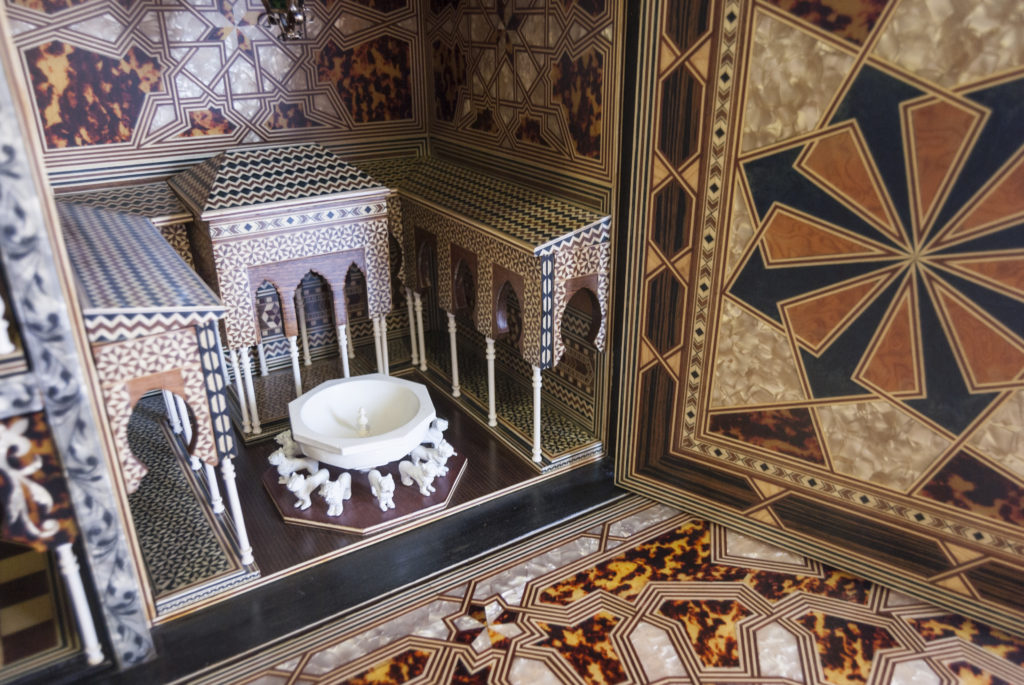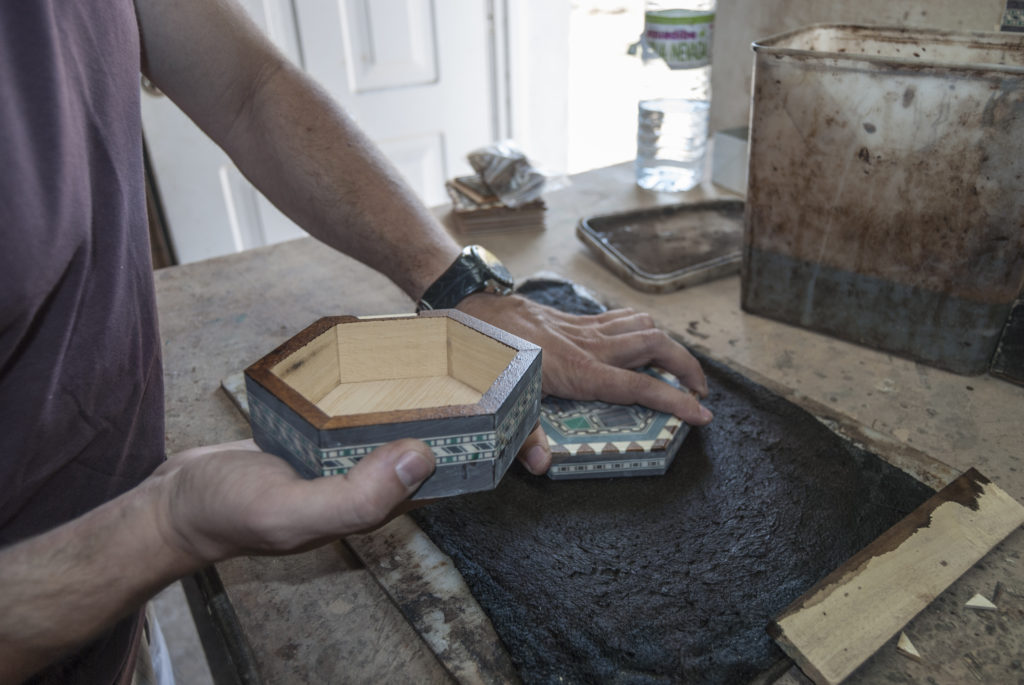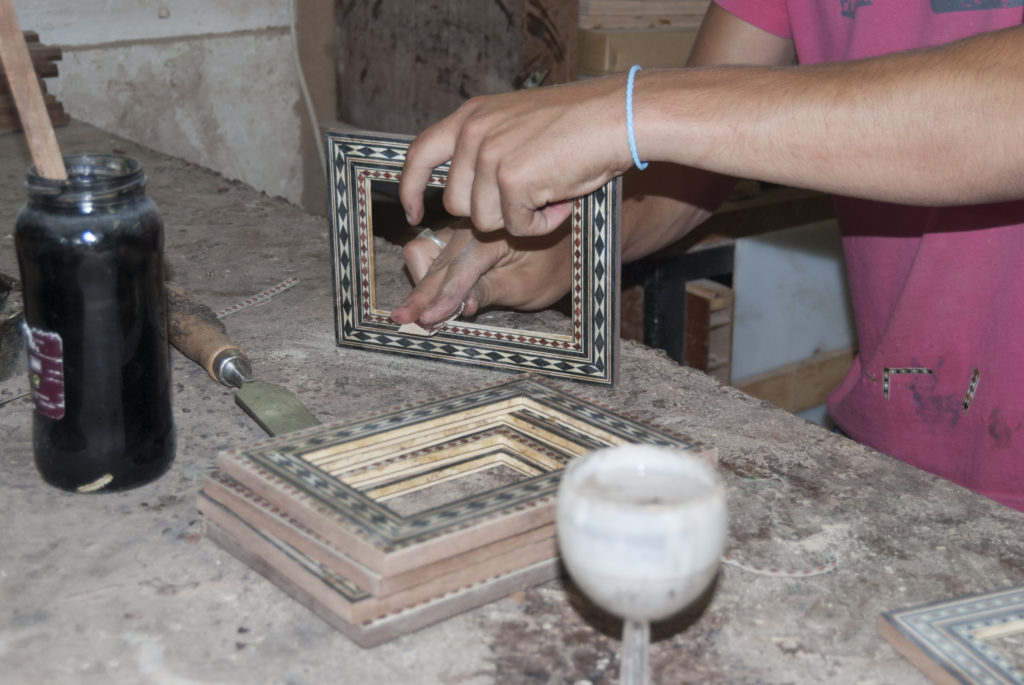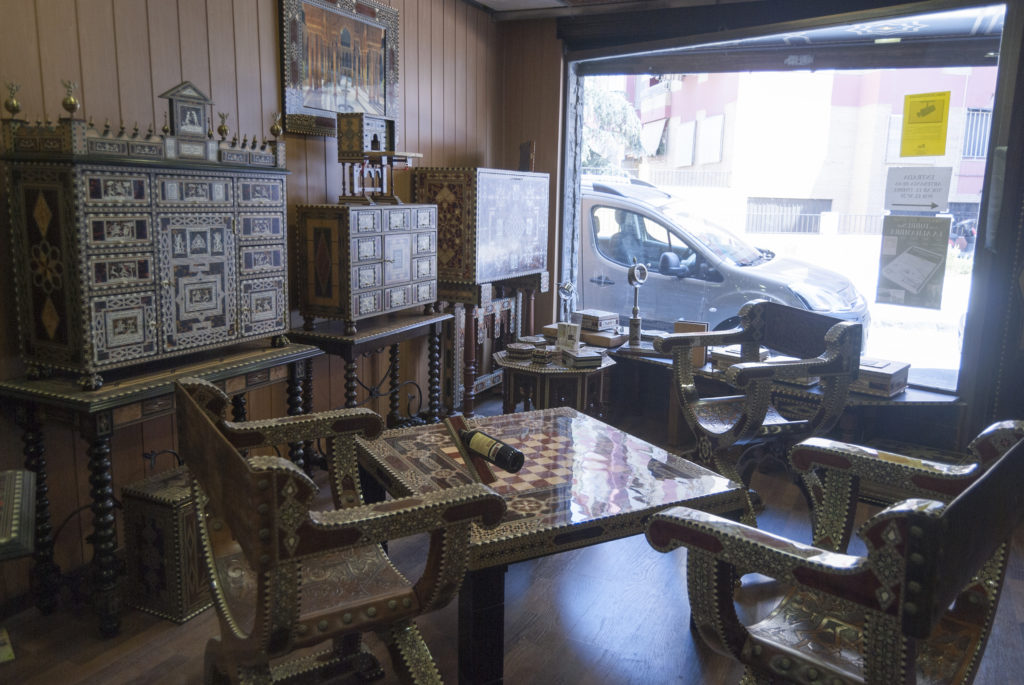Taracea (wood-inlaying intarsia)
The art of taracea (inlay work) has survived to the present day through the transmission of the knowledge that is still preserved by the craftsmen who keep some workshops open in the city of Granada.
Basically, it consists of a craft that involves sticking geometric pieces (wooden fretwork and stars) on another flat wooden surface: a board, a table, a case, a box, a cabinet, etc.
Historical Notes
The taracea is a craft that has its origins in Muslim Spain, as it was the Arabs who introduced this technique linked to marquetry work. The Nasrid Kingdom of Granada was the place where it acquired the greatest splendour thanks to its use in palace furniture, enriching it decoratively. It provides distinction in terms of ornamental elements, inspired by geometric figures and lacework that can be found on the plinths of the palaces and gardens of the Alhambra. During this period, several types of furniture such as doors, chests, chairs, etc., were made using this technique, which consisted of inlaying small pieces of wood into a plank of the same material, interspersing lines and thus forming a wide variety of polygons. For the composition of the pieces, apart from diverse types of wood, other more luxurious materials were used, such as ivory, bone, tortoiseshell, mother-of-pearl and even silver inlays. The colouring of the wood was another defining aspect of Nasrid inlay work. After the capture of Granada by the Catholic Monarchs, inlaid woodwork did not disappear, but survived through the arduous work of the craftsmen who continued this craft in their workshops for several centuries.
Technical procedures
Varnishing
The furniture is varnished with shellac, while synthetic varnish is applied to smaller objects such as jewellery boxes and cases.
Once all the pieces have been assembled, the first varnishing of the piece is carried out before sanding the object.
Sanding
Sanding is carried out on all sides to remove imperfections so that the piece is uniform. This procedure is completed with an electric machine and also by hand, depending on the object.
Inlaying
The next procedure is one of the aspects that properly identifies the craft. This consists of lining the piece of wood with the fretwork and stars as if it were a jigsaw puzzle, also known in the jargon of the craft as “making the paths”. Hot glue made from rabbit skin mixed with chemicals is used to embed the stars and fretwork in the wood. Each piece is glued to the wood and the distinct parts of the design are assembled.
Assembly
Several of the ornamental elements that characterise inlay work are fretwork and stars. These are geometric elements that are made by the craftsmen themselves entirely by hand and are then used in turn to create the geometric design. This is a very meticulous task, as thin wooden rods of various shapes are used to make each motif. To make a star, elongated wooden rods of different polygonal shapes (rhombus, square or triangle) are glued together from the centre outwards to form an ingot. Beforehand, each rod is dyed in assorted colours. Finally, thin sheets are cut from each ingot. The fretwork is made in an analogous way, although the size of the fretwork is different because of its function in the geometric design.

Bargueño. Photo: Ana Belén García Muñoz. © Instituto Andaluz del Patrimonio Histórico
IAPH image under the conditions established under license cc-by 3.0 de Creative Common. https://creativecommons.org/licenses/by/3.0/es/

Tintado de Cantos de Joyero. Photo: Ana Belén García Muñoz. © Instituto Andaluz del Patrimonio Histórico
IAPH image under the conditions established under license cc-by 3.0 de Creative Common. https://creativecommons.org/licenses/by/3.0/es/

Lijado de Madera. Photo: Ana Belén García Muñoz. © Instituto Andaluz del Patrimonio Histórico
IAPH image under the conditions established under license cc-by 3.0 de Creative Common. https://creativecommons.org/licenses/by/3.0/es/

Tienda de Exposición. Photo: Ana Belén García Muñoz. © Instituto Andaluz del Patrimonio Histórico
IAPH image under the conditions established under license cc-by 3.0 de Creative Common. https://creativecommons.org/licenses/by/3.0/es/
Agencia EFE. (2009). La taracea: un arte en peligro de extinción. [Video File].

